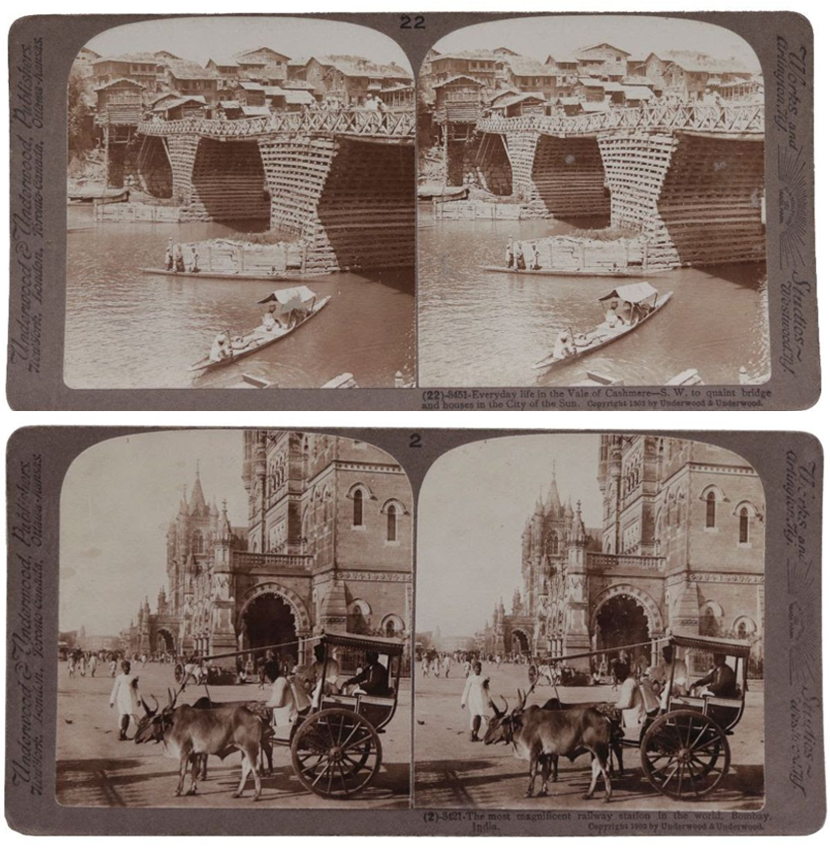Stereoscope, 1901 and Stereographs, India, 1903.
Stereoscopes were popular through the Victorian and Edwardian eras, providing people with entertaining and educational views of the world. They worked by creating an illusion of depth, giving a three-dimensional effect to an image, by using two photographs of the same view taken from very slightly different angles. This small change in perspective creates the optical illusion when viewed through the handheld stereoscope.

These stereographs are from a recent acquisition to the collection and depict locations across India and Pakistan. There are 98 images from Rajasthan, Maharashtra, Gujarat, Himachal Pradesh, Kashmir, Punjab, Tamil Nadu, Uttar Pradesh and West Bengal.
Underwood and Underwood were the world’s largest producer of stereographs. At one point, they were producing ten million images a year, including many themed box-sets of stereographs. Their travel series were particularly popular. The South Asia Collection has two sets of Underwood and Underwood stereographs; the Delhi Durbar, 1903 and this set, India Volumes I and II, from The Underwood Travel Library. Underwood and Underwood ceased production in 1920.




